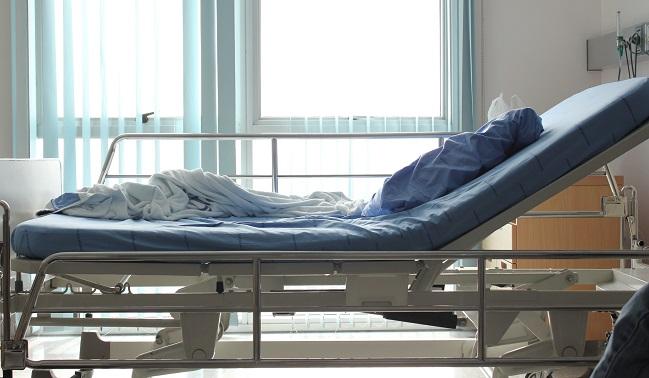Latest SWEDEHEART Data Show Acute MI Mortality Rates Have Stagnated
After years of improving outcomes, new approaches may be needed to see additional gains.

MUNICH, Germany—Gone are the days of large reductions in mortality following acute MI, new SWEDEHEART data indicate.
From 1995 to 2010, in-hospital and 1-year mortality fell as use of evidence-based therapies—such as primary PCI, dual antiplatelet therapy (DAPT), statins, and ACE inhibitors/angiotensin receptor blockers (ARBs)—increased, but progress has come to a virtual standstill since then, Tomas Jernberg, MD, PhD (Karolinska Institute, Stockholm, Sweden), reported here last week at the European Society of Cardiology Congress 2018.
“The established treatment concepts have been further fine-tuned and improved, but few new treatment concepts have been introduced,” Jernberg said. “These data indicate an urgent need for a better individual tailoring of more costly treatments in order to maintain cost-effectiveness and also for identification of new breakthrough treatments to further improve outcomes in AMI.”
The findings come from the most recent look at Sweden’s national SWEDEHEART registry. For the current analysis, Jernberg and colleagues examined data on 371,431 acute MI cases recorded between 1995 and May 2018.
The characteristics of patients presenting with acute MI changed during the span. Median patient age remained relatively consistent at about 72, with men making up about two-thirds of patients. But there were increases in the proportions of patients with diabetes (from 22% to 27%), hypertension (from 35% to 67%), and a history of prior PCI (from 3% to 21%). Use of statins on admission increased from 5% to 33%, while the percentage of patients with rales on admission—an indicator of severity—declined from 37% to 9%.
Looking at crude mortality, there were declines from 1995 to 2010 in both in-hospital rates (from about 13% to 5%) and 1-year rates (from about 25% to 15%). Over the last 8 years of the study, however, the mortality risk did not change much.
That leveling off of survival gains was accompanied by a similar plateau in the use of therapies proven to improve outcomes in patients with acute MI. For patients with STEMI, use of reperfusion therapy steadily ticked up from about 65% in 1995 to 85% at the end of the study period. Looking at primary PCI specifically, though, there was a marked increase in use from about 5% in 1995 to 75% in 2009-2010, followed by a more gradual increase into 2018.
In the NSTEMI subgroup, there were large increases in use of angiography in the hospital and within 3 days, as well as in-hospital PCI, in the first half of the study period, followed by smaller increases through the end of the study period.
A similar relationship between tapering gains in mortality and a leveling off of use of evidence-based therapies was seen for medical treatment at discharge—particularly when it came to DAPT, ACE inhibitors/ARBs, and statins.
Not Just Sweden
Martha Gulati, MD (Banner – University Medicine Heart Institute, Phoenix, AZ), who was not involved in the study, told TCTMD that the trends seen in the Swedish data are not much different from what is being observed in the United States, which could be a reflection of changing demographics and the optimization of medical therapy.
“Trying to figure out how we can make further reductions really becomes the question for our future,” she said.
Focusing on primary prevention—by more aggressively treating diabetes and lipid abnormalities, improving diet quality, and treating hypertension earlier, for example—could pay dividends by reducing the incidence of acute MI, Gulati said.
But looking at people who have already had an acute MI, one way to potentially push mortality rates even lower could be to make sure guideline-directed medical therapies are being offered to everyone on an equal basis, regardless of insurance coverage, sex, or racial/ethnic background, Gulati said.
We’ve become very good at caring for myocardial infarction, but let’s not rest on our laurels. Martha Gulati
Physicians might also be able to make further gains by redoubling their efforts to get patients into cardiac rehab programs, she said.
“We’ve shown over and over again that people do better if they get cardiac rehab, so that’s one place that all of us all over the world can be more aggressive about making sure not only do we refer and enroll patients but help them adhere to it,” Gulati said, noting that efforts to make such programs more accessible from home could make it easier for patients to participate.
Aside from optimizing use of existing strategies, development of new therapies could lead to additional reductions in acute MI mortality in the future, Gulati said. “We’ve become very good at caring for myocardial infarction, but let’s not rest on our laurels.”
Todd Neale is the Associate News Editor for TCTMD and a Senior Medical Journalist. He got his start in journalism at …
Read Full BioSources
Jernberg T. No changes in survival after acute myocardial infarction in the last decade: new data from SWEDEHEART. Presented at: ESC 2018. August 27, 2018. Munich, Germany.
Disclosures
- Jernberg reports no relevant conflicts of interest.


Comments